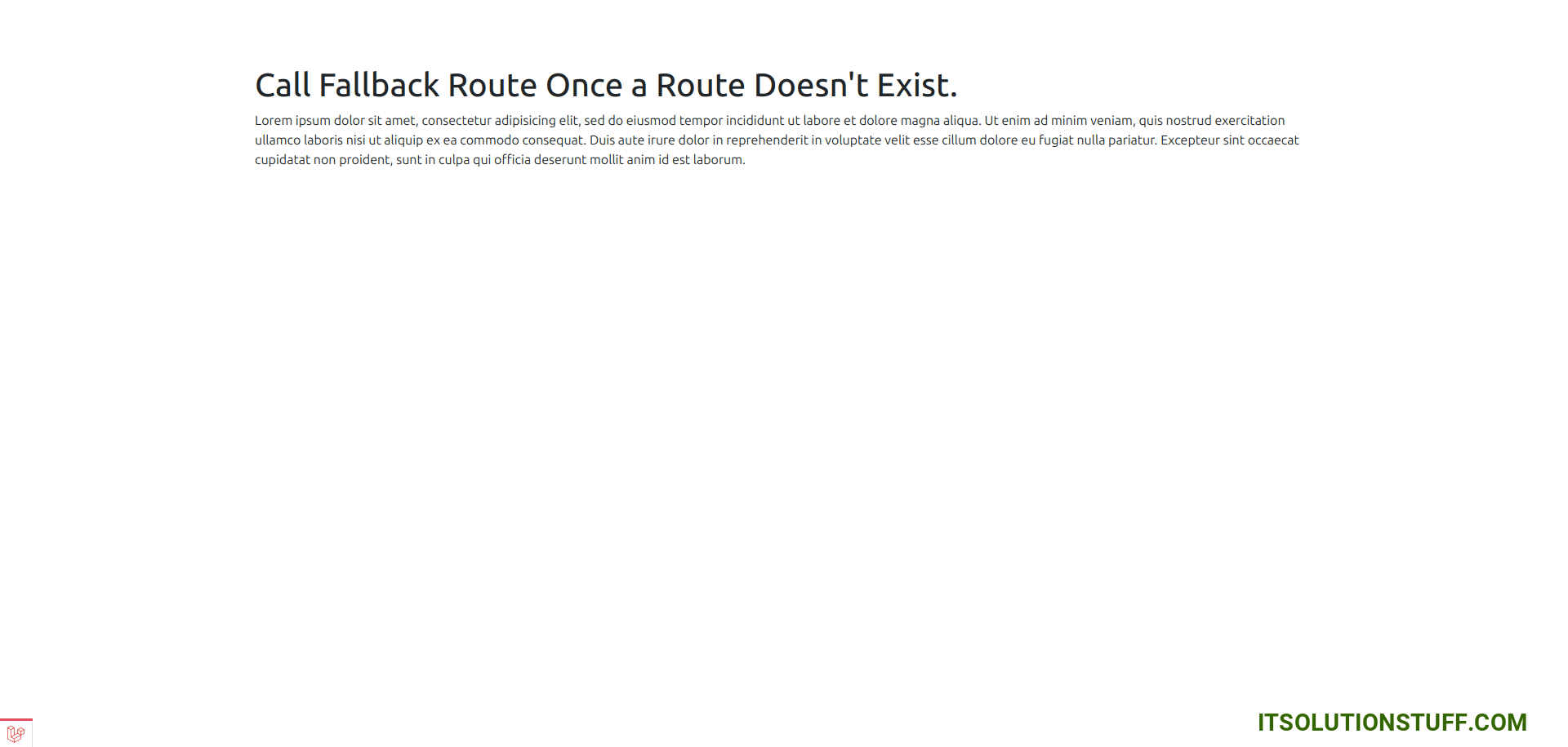How to Define Fallback Routes in Laravel?
Hello Dev,
This article will provide an example of laravel fallback route. you can understand a concept of how to use fallback route in laravel. we will help you to give an example of laravel define fallback route. In this article, we will implement a laravel fallback no other route matched.
What is fallback route in laravel?, you may define a route that will be executed when no other route matches the incoming request. So, basically, it's handle 404 error page. you can create your own 404 error using fallback route.
so, let's see how to define fallback route in laravel step by step.
Step 1: Install Laravel App
This step is not required; however, if you have not created the laravel app, then you may go ahead and execute the below command:
composer create-project laravel/laravel example-app
Step 2: Create Fallback Route
Furthermore, open routes/web.php file and add fallback route with controller name as like the below.
routes/web.php
<?php
use Illuminate\Support\Facades\Route;
use App\Http\Controllers\FallbackController;
/*
|--------------------------------------------------------------------------
| Web Routes
|--------------------------------------------------------------------------
|
| Here is where you can register web routes for your application. These
| routes are loaded by the RouteServiceProvider within a group which
| contains the "web" middleware group. Now create something great!
|
*/
Route::fallback(FallbackController::class);
Step 3: Create Controller
In this step, we will create a new FallbackController; in this file, we will have a __invoke method to call view file.
next, let's update the following code to Controller File.
app/Http/Controllers/FallbackController.php
<?php
namespace App\Http\Controllers;
use Illuminate\Http\Request;
class FallbackController extends Controller
{
/**
* Write code on Method
*
* @return response()
*/
public function __invoke()
{
return view('fallback');
}
}
Step 4: Create Blade File
Here, we will create fallback.blade.php file with html code. so let's update as like the below:
resources/views/fallback.blade.php
<!DOCTYPE html>
<html>
<head>
<meta charset="utf-8">
<meta name="viewport" content="width=device-width, initial-scale=1">
<link href="https://cdn.jsdelivr.net/npm/bootstrap@5.0.2/dist/css/bootstrap.min.css" rel="stylesheet">
<title></title>
</head>
<body>
<div class="container">
<h1>Call Fallback Route Once a Route Doesn't Exist.</h1>
<p>Lorem ipsum dolor sit amet, consectetur adipisicing elit, sed do eiusmod
tempor incididunt ut labore et dolore magna aliqua. Ut enim ad minim veniam,
quis nostrud exercitation ullamco laboris nisi ut aliquip ex ea commodo
consequat. Duis aute irure dolor in reprehenderit in voluptate velit esse
cillum dolore eu fugiat nulla pariatur. Excepteur sint occaecat cupidatat non
proident, sunt in culpa qui officia deserunt mollit anim id est laborum.</p>
</div>
</body>
</html>
Run Laravel App:
All the required steps have been done, now you have to type the given below command and hit enter to run the Laravel app:
php artisan serve
Now, Go to your web browser, type the given URL and view the app output:
http://localhost:8000/demo-demo
Output:

I hope it can help you...

